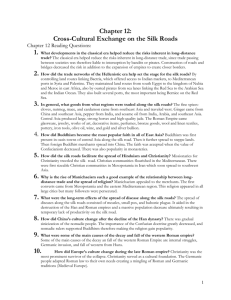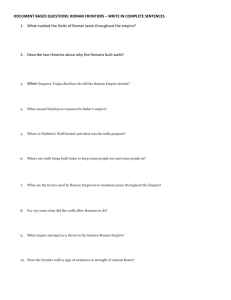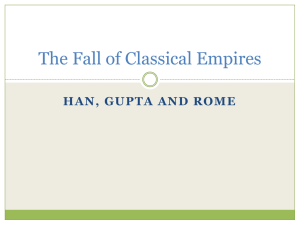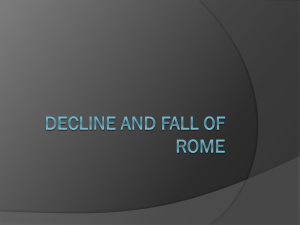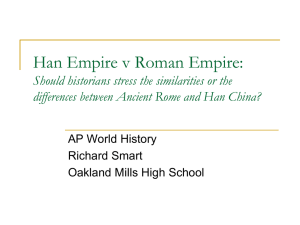File
advertisement
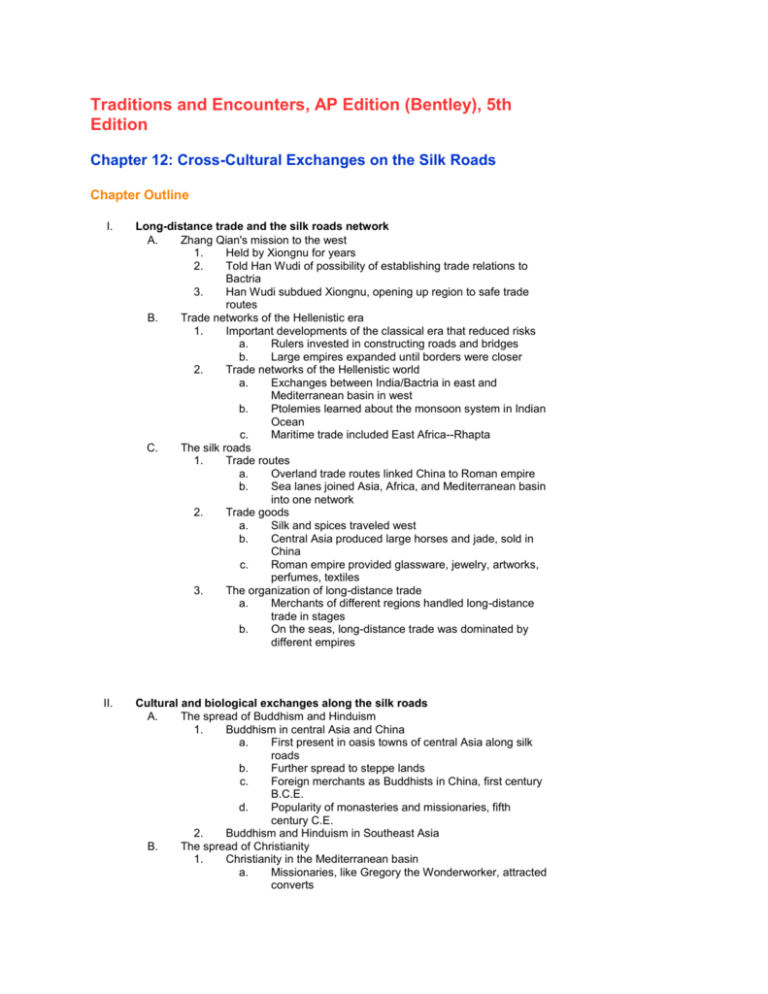
Traditions and Encounters, AP Edition (Bentley), 5th Edition Chapter 12: Cross-Cultural Exchanges on the Silk Roads Chapter Outline I. Long-distance trade and the silk roads network A. Zhang Qian's mission to the west 1. Held by Xiongnu for years 2. Told Han Wudi of possibility of establishing trade relations to Bactria 3. Han Wudi subdued Xiongnu, opening up region to safe trade routes B. Trade networks of the Hellenistic era 1. Important developments of the classical era that reduced risks a. Rulers invested in constructing roads and bridges b. Large empires expanded until borders were closer 2. Trade networks of the Hellenistic world a. Exchanges between India/Bactria in east and Mediterranean basin in west b. Ptolemies learned about the monsoon system in Indian Ocean c. Maritime trade included East Africa--Rhapta C. The silk roads 1. Trade routes a. Overland trade routes linked China to Roman empire b. Sea lanes joined Asia, Africa, and Mediterranean basin into one network 2. Trade goods a. Silk and spices traveled west b. Central Asia produced large horses and jade, sold in China c. Roman empire provided glassware, jewelry, artworks, perfumes, textiles 3. The organization of long-distance trade a. Merchants of different regions handled long-distance trade in stages b. On the seas, long-distance trade was dominated by different empires II. Cultural and biological exchanges along the silk roads A. The spread of Buddhism and Hinduism 1. Buddhism in central Asia and China a. First present in oasis towns of central Asia along silk roads b. Further spread to steppe lands c. Foreign merchants as Buddhists in China, first century B.C.E. d. Popularity of monasteries and missionaries, fifth century C.E. 2. Buddhism and Hinduism in Southeast Asia B. The spread of Christianity 1. Christianity in the Mediterranean basin a. Missionaries, like Gregory the Wonderworker, attracted converts b. C. D. III. Christian communities flourished in Mediterranean basin by late third century C.E. 2. Christianity in Southwest Asia follows the trade routes a. Sizable communities in Mesopotamia and Iran, second century C.E. b. Sizable number of converts in southwest Asia until the seventh century C.E. c. Their ascetic practices influenced Christian practices in the Roman empire d. Nestorians emphasized human nature of Jesus, fifth century C.E. e. Nestorian communities in central Asia, India, and China by seventh century C.E. The spread of Manichaeism; best example of religion spread on silk roads 1. Mani and Manichaeism a. Prophet Mani, a Zoroastrian, drew influence from Christianity and Buddhism b. Dualism: perceived a cosmic struggle between light and darkness, good and evil c. Offered means to achieve personal salvation d. Ascetic lifestyle and high ethical standards e. Differentiation between the "elect" and the "hearers" 2. Spread of Manichaeism; appealed to merchants a. Attracted converts first in Mesopotamia and east Mediterranean region b. Appeared in all large cities of Roman empire, third century C.E. 3. Persecuted by Sasanids and Romans but survived in central Asia The spread of epidemic disease 1. Epidemic diseases a. Common epidemics in Rome and China: smallpox, measles, bubonic plague b. Roman Empire: population dropped by a quarter from the first to tenth century C.E. c. China: population dropped by a quarter from the first to seventh century C.E. 2. Effects of epidemic diseases a. Both Chinese and Roman economies contracted b. Small regional economies emerged c. Epidemics weakened Han and Roman empires China after the Han dynasty A. Internal decay of the Han state 1. Problems of factions and land distribution led to rebellions 2. Generals usurped political authority; the emperor became a puppet a. By 220 C.E., generals abolished the Han and divided the empire into three kingdoms b. Nomadic peoples came in; China became even more divided for 350 years B. Cultural change in post-Han China 1. Gradual sinicization of nomadic peoples 2. Withering of Confucianism in light of political instability 3. Popularity of Buddhism; nomadic rulers embraced it IV. The fall of the Roman empire A. Internal decay in the Roman empire 1. The barracks emperors: series of generals seizing throne (235284 C.E. 2. The emperor Diocletian (284-305 C.E.) a. Divided the empire into two administrative districts b. A co-emperor ruled each district with the aid of a powerful lieutenant 3. The emperor Constantine and new capital Constantinople B. Germanic invasions and the fall of the western Roman empire 1. Germanic migrations from northern Europe to eastern and northern part of Roman empire a. Visigoths--settled agriculturalists; adopted Roman law and Christianity b. Roman authorities kept Germanic peoples on the borders as a buffer 2. The Huns under Attila attacked Europe mid-fifth century C.E. 3. The collapse of the western Roman empire a. Under the Huns' pressure, Germanic peoples streamed into the Roman empire b. Established settlements in Italy, Gaul, Spain, Britain, and north Africa c. Germanic general Odovacer deposed the Roman emperor, 476 C.E. d. Imperial authority survived in the eastern half of the empire C. Cultural change in the late Roman empire 1. Christianity most prominent survivor of the collapse of the empire a. With Constantine's Edict of Milan, Christianity became a legitimate religion, 313 C.E. b. Emperor Theodosius proclaimed Christianity the official religion, 380 C.E. c. St. Augustine harmonized Christianity with Platonic thought 2. The Church became increasingly institutionalized a. Conflicting doctrines and practices among early Christians b. Established standardized hierarchy of church officials c. The bishop of Rome, known as the pope, became spiritual leader d. As Roman empire collapsed, Christianity served as a cultural foundation


